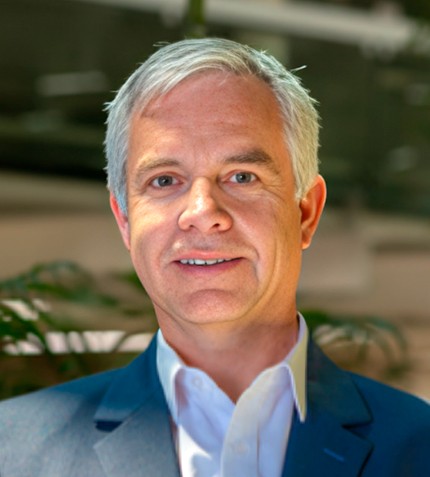
"The chemical distribution industry is growing faster than the overall economy, with global distribution expanding at approximately 7% annually. Mexico's growth rate is expected to outpace that average."
RELATED PUBLICATION
ARTICLES FROM THIS PUBLICATION
Francisco Martínez
MANAGING DIRECTOR, GREENCHEM INDUSTRIES
Can you provide an overview of GreenChem Industries and its operations?
GreenChem has 41 physical locations, including warehouses, transfer centers, tanks and stations, primarily in North America and Mexico. The company's portfolio comprises over 500 chemical products, catering to almost all industrial segments, from paint manufacturing to food and cosmetics.
GreenChem entered the Mexican market in June 2024 as part of its plan to grow in Latin America. The decision was driven by demand from US customers seeking products in Mexico. GreenChem now has three warehouses in Mexico located in Guadalajara, Monterrey and Mexico City, with local inventory to serve customers efficiently. The operation has grown rapidly. We serve customers of all sizes, including micro, small, and medium enterprises, which constitute over 90% of businesses in Mexico.
What industries and regions in Mexico present significant growth opportunities?
The chemical distribution industry is growing faster than the overall economy, with global distribution expanding at approximately 7% annually. In North America, including Mexico, the market is projected to grow from US$38 billion in 2023 to US$58 billion by 2030. Mexico's growth rate is expected to outpace that average. There are more than 750,000 end-users, meaning the market has ample room for players. In Mexico under the current administration, the government has shown more openness to engaging with the industry.
GreenChem sees substantial growth potential in northern Mexico. This region is a hub for manufacturing and automotive industries, which continue to grow despite economic challenges. Our diverse portfolio supports industries such as automotive, with a focus on paints, coatings, and specialized products. Additionally, the personal care and home care sectors have shown resilience and growth. The food industry, not only for human consumption but also for pets and livestock, is expanding significantly due to rising trends. Additionally, the pharmaceutical sector is another standout. It includes the manufacturing of active ingredients and the production of medicines and medical supplies.
What challenges have GreenChem Industries faced, and how have you managed them?
Regulation is a significant challenge in the chemical industry. While regulation is necessary, Mexico is on the extreme side of overregulation. For example, obtaining permits for importing certain products can take up to six months, requiring over 400 forms and interactions with multiple government agencies. This is particularly challenging given Mexico's increasing reliance on imports as domestic petrochemical production declines. Despite these hurdles, the best approach is understanding and working with the process. For instance, we began some of our import permits six months ago and are now starting to receive approvals. I also recommend working closely with industry associations like ANIQ and engaging consultants to navigate the system effectively. Infrastructure is another major issue. Mexico has underinvested in ports like Manzanillo, Lázaro Cárdenas and Veracruz, which are now overwhelmed. Poor road conditions exacerbate the problem, with critical routes like Mexico–Querétaro and Mexico–Veracruz becoming almost impassable sometimes. Security is also a concern, with chemical cargo being a frequent target for theft. For instance, it is not uncommon for three trucks, each carrying 20 to 40 tons of chemicals, to be stolen in a single day. To mitigate these issues, we have adopted protocols like double GPS tracking and hired monitoring companies, which increases costs, ultimately impacting the price of finished goods.
How do you view sustainability trends in Mexico's chemical industry?
Sustainability in Mexico still has a long way to go. While there are trends toward green and bio-based products, they remain niche. One of the biggest challenges is that many distribution companies in Mexico are not meeting basic regulatory and safety standards. Of around 350 distributors, only 80 are part of ANIQ, and even fewer—about 20%—have certifications like Responsible Care. It is difficult to talk about green products when fundamental compliance issues persist. At GreenChem, we are committed to sustainability. We are ANIQ members working to obtain SARI certification in Mexico by April next year. Globally, we are certified by EcoVadis. We believe the industry must focus on reducing emissions, improving logistics efficiency, adopting responsible practices, and exploring green products.
What are your expectations for the coming year?
Although Mexico's economic growth is expected to be low, I remain optimistic due to the resilience of Mexican businesses and the opportunities presented by the North American market.











